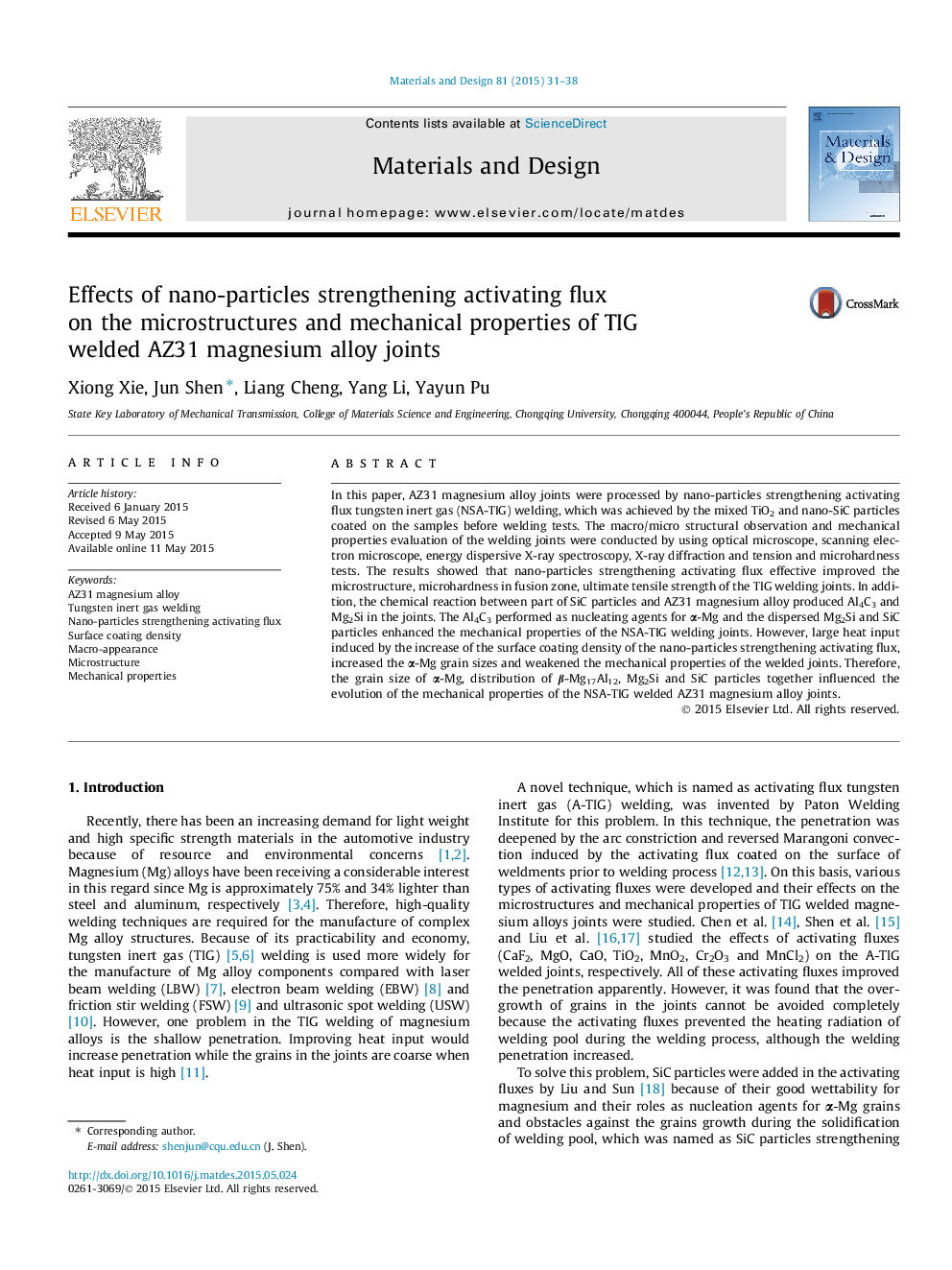| Article ID | Journal | Published Year | Pages | File Type |
|---|---|---|---|---|
| 828507 | Materials & Design (1980-2015) | 2015 | 8 Pages |
•Increased nano-particles strengthening activating flux degraded TIGed seams.•The reaction between SiC particles and Mg alloy produced Al4C3 and Mg2Si phases.•Al4C3 and SiC particles promoted the nucleation and suppressed the growth of α-Mg.•Refined α-Mg grains, precipitated phase and SiC particles enhanced TIGed joints.
In this paper, AZ31 magnesium alloy joints were processed by nano-particles strengthening activating flux tungsten inert gas (NSA-TIG) welding, which was achieved by the mixed TiO2 and nano-SiC particles coated on the samples before welding tests. The macro/micro structural observation and mechanical properties evaluation of the welding joints were conducted by using optical microscope, scanning electron microscope, energy dispersive X-ray spectroscopy, X-ray diffraction and tension and microhardness tests. The results showed that nano-particles strengthening activating flux effective improved the microstructure, microhardness in fusion zone, ultimate tensile strength of the TIG welding joints. In addition, the chemical reaction between part of SiC particles and AZ31 magnesium alloy produced Al4C3 and Mg2Si in the joints. The Al4C3 performed as nucleating agents for α-Mg and the dispersed Mg2Si and SiC particles enhanced the mechanical properties of the NSA-TIG welding joints. However, large heat input induced by the increase of the surface coating density of the nano-particles strengthening activating flux, increased the α-Mg grain sizes and weakened the mechanical properties of the welded joints. Therefore, the grain size of α-Mg, distribution of β-Mg17Al12, Mg2Si and SiC particles together influenced the evolution of the mechanical properties of the NSA-TIG welded AZ31 magnesium alloy joints.
Graphical abstractFigure optionsDownload full-size imageDownload as PowerPoint slide
